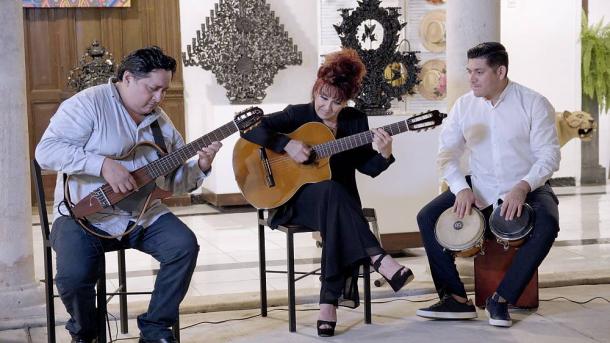News
Bolero is registered as an Intangible Cultural Heritage of humanity

On December 5, 2023, the Intergovernmental Committee for the Safeguarding of Intangible Cultural Heritage of the United Nations Educational, Scientific and Cultural Organization (UNESCO) approved, during its 18th session in Kasane, Botswana, the inscription of the cultural practice of Bolero on the Representative List of Intangible Cultural Heritage (ICH) of humanity.
The list aims to ensure that Intangible Cultural Heritage and elements proposed as representative by the States Parties are recognized for their significance and carrying out safeguarding actions in collaboration with the bearer communities. In this case, the community of the Bolero strengthens its composition, interpretation, and transmission of its knowledge and identity practices.
The binational dossier "Bolero: identity, emotion, and poetry made into song" was jointly presented in March 2022 by the Ministry of Culture of the Government of Mexico and the Ministry of Culture of Cuba to the international organization, which approved in 2003 the Convention for the Safeguarding of Intangible Cultural Heritage, signed by both countries.
The candidacy was promoted in Mexico by the Bolero Institute of Mexico (IBM), with the support of the federal Ministry of Culture through its General Directorates of Popular, Indigenous, and Urban Cultures, as well as International Affairs. In Cuba, by the Ministry of Culture. The process involved individuals from both countries, including authors, composers, arrangers, musicians, performers, academics, cultural promoters, and followers of this practice.
Bolero originated in Cuba in 1883 and spread to Mexico and other Latin American countries with its lyrical lyrics of love and heartbreak, accompanied by rhythmic percussion, guitars, basses, pianos, winds, and its characteristic Mexican requinto, which, together with solitary or group voices, enriched it, both in its country of origin and in the nations that embraced it as their own, such as Mexico.
Bolero has been given from generation to generation, bringing together its bearers and promoting their interaction, encouraging the transmission of knowledge from instrumental and musical aspects to lyrical and dance elements.
These interactions have turned it into a cultural practice with a strong sense of collective identity in Mexican and Cuban cultures, as many people identify with its practice in family and community settings, at events such as parties, serenades, commemorations, even mourning ceremonies, in daily life, and in special gatherings for the interpretation and listening of Bolero, called bohemias in Mexico and descargas or peñas in Cuba.
The Bolero represents a cultural heritage of Cuba and Mexico transmitted within families and communities through oral tradition and imitation. It is a living heritage that continues developing new compositions and interpretations in both urban and rural scenes, serving as an inspiration in various moments of the lives of its followers and bearers.
Its prestige and adoption by different sectors have led to its expansion in Latin America and Spanish-speaking countries, as well as in other continents such as Europe and Asia.
The efforts in Mexico for the Bolero inclusion into the ICH Representative List began in 2015 with the creation of the Bolero Institute of Mexico and its registration in the National Inventory in 2018. The Institute submitted the initiative in 2020 to nominate the binational candidacy to UNESCO to the federal Ministry of Culture, allowing the joint dossier integration with the Ministry of Culture of Cuba.
The Safeguarding Plan developed by the institutions and organizations includes 22 projects and is divided into three thematic areas: Bolero education and training, Identification and visibility, and Strengthening the capacities of bearers for self-management and recognition.
The inscription as Intangible Cultural Heritage is a tool that reinforces safeguarding by promoting the creation of specific plans and actions for its preservation. It also legitimizes these practices as a cultural right and an expression of diversity while granting identity and cohesion among bearer communities, even more broadly.
Cuba and Mexico maintain a cultural dialogue that grows "to the rhythm of Bolero".









